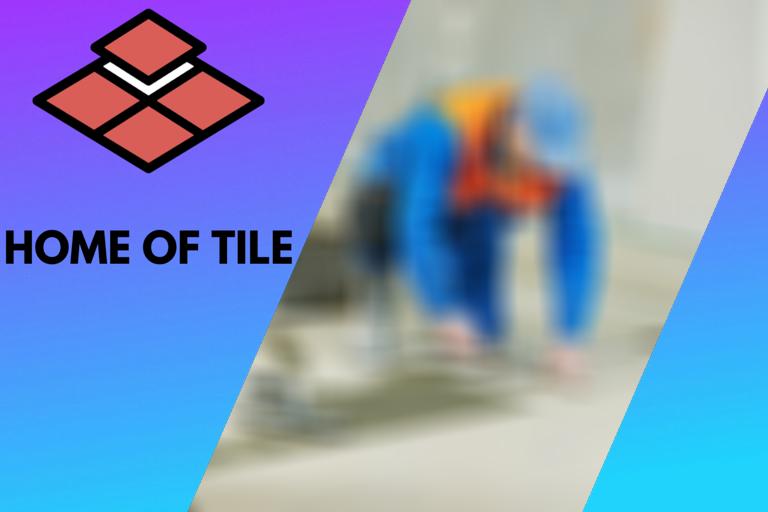How Asbestos Ceiling Tiles Look, 21 Things You Should Know
From the 1950s to the 1980s, asbestos was a widespread addition to homeowner’s ceiling solutions. Backed by minerals, mastic, and organic fiber, asbestos tiles last long and highly resist heat and fire.
Unfortunately, asbestos exposure poses severe health risks, which you can avoid by reading this article.

Contents
How Do Asbestos Ceiling Tiles Look?
Asbestos ceilings appear in almost every shade, such as white, green, brown, black, gray, beige, tan, wooded tone, blue, red, yellow, etc. In addition, the tiles come with light to mild textures, creating pinhole marks on the installed surface.
Do Ceiling Tiles Have Asbestos?
Not all ceiling tiles contain asbestos. In fact, modern homes can not have asbestos ceiling tiles as EPA bans them due to their risk of exposure to the air.
However, if your property was built before 1980, your ceiling tiles have a high possibility of having asbestos. If that’s the case, you must inspect it properly before renovating or demolishing the ceiling. Remember that the ban on asbestos in ceiling tiles only came into place in 2019, so construction companies may have continued using it.
How To Tell If My Ceiling Tiles Have Asbestos?
Knowing if your ceiling tiles have asbestos is a tricky process. As asbestos fibers are tiny in size, it is impossible to differentiate them from other materials just by looking. Instead, you need a combination of visual cues and expert confirmation.
The easiest way to know if your ceiling has asbestos is to find its age. The manufacturing and installation date combined with the trademark details could give a preliminary idea. For example, if the ceiling tiles were made sometime between 1950 to 1980, your tiles likely have asbestos.
Visual Cues To Identify Asbestos
Here are some visual cues to identify whether your ceiling tiles contain asbestos.
1. Look and Shape of the Tiles
Physical appearance is the most common way to identify the asbestos material in ceiling tiles. Ceiling tiles with asbestos fiber have granular textures in light colors.
Most asbestos ceiling tiles were designed with rectangular (2×4) and square (2×2) shapes. You may also notice pinhole markings on the surface, prevalent among ceilings containing asbestos tiles.
2. Tiles Materials and Adhesives
Your ceiling material can also provide clues to identify asbestos in its tiles.
If your ceiling tiles consist of materials such as metal, fiberglass, gypsum, clay, and concrete, you can be assured that there is no asbestos in them.
Materials like amosite in old tiles may contain asbestos, especially if you find them affixed using mastic.
3. Typical Installation Surface
Asbestos ceiling tiles were commonly installed in commercial buildings, schools, universities, hospitals, warehouses, etc. In addition, churches and other properties that require acoustic features may also have them.
In residential properties built before the ’80s, asbestos can be found in the kitchen ceiling, basement, or attic area.
4. Manufacturer Statement
Brands like Celotex, Gyptone, US Gypsum, etc., commonly used asbestos in their tiles during hay days. Therefore, find the manufacturer and check their website to know whether your ceiling tiles contain asbestos.
Thanks to some stringent regulations, you can trust a manufacturing company claiming to have no asbestos in their ceiling tiles.
Expert Solutions To Identify Asbestos
Inspecting the presence of asbestos in your ceiling tiles can put your health at risk. So if you can’t identify them visually, seek expert assistance. A couple of options available to you for this purpose include the following.
1. Certified Asbestos Inspection
In many US States, getting your old house inspected by a certified asbestos inspector is a legal requirement before demolishing or renovating.
Go to a professional asbestos agency where certified experts will guide you to identify ceiling tiles that contain asbestos. Depending on the agency, you may get a free inspection opportunity to reduce any confusion related to asbestos material.
2. Asbestos Inspection Laboratory
You can take your ceiling tiles for a laboratory test to scientifically determine the asbestos’s presence. This testing will confirm the presence of asbestos, including details about the many types of asbestos in the particular ceiling tiles.
An asbestos inspector may also recommend this step to confirm their suspicion conclusively.
What Can I Do if My Ceiling Tiles Have Asbestos?
If you are working or living in a place where it has ceiling tiles with asbestos, your health is at higher risk. Therefore, it is necessary to follow the better cautious than sorry approach.
If your ceiling tiles have asbestos, you have limited options, including encapsulation, covering up, and removal. Start with a state agency, where trained professionals will inspect the materials and decide what material needs what types of treatment to ensure safety.
Intact ceiling tiles have less risk of causing health hazards for you and your family. In this case, encapsulation is enough to stay safe.
In contrast, if your home is about to undergo renovation, it has a higher risk of releasing asbestos fiber into the air. Therefore, you must remove the tiles instead of demolishing them in such instances.
● How To Remove Asbestos Tiles?
Do not ever try to remove ceiling tiles by yourself; it can cause great danger to your health. Only professionals with an asbestos license have the expertise to handle these issues.
- To start, professionals first inspect the ceiling to confirm the presence of asbestos.
- Next, they will send the sample material for laboratory tests.
- Then, laboratory tests will scientifically determine whether the materials contain asbestos.
- Finally, removal professionals start to remove the tiles.
● How Do I Cover Asbestos Ceiling Tiles?
Exposed asbestos tiles can make the environment toxic, potentially causing severe damage to your health. So it is essential to seal them to minimize the risk.
You can seal asbestos ceiling tiles yourself through encapsulation. It involves applying a solid coat of latex paint over the ceiling tiles. You must take diligent precautions to avoid any health hazards.
Covering asbestos tiles with drywall is a popular option. PVC paneling and ceiling planks also work well to negate the risks of asbestos fiber released into the air.
How To Seal Asbestos With Paints?
You can follow the below steps to successfully seal the asbestos ceiling tiles with paint encapsulation.
1. Put On Your Safety Gears
Asbestos materials are dangerous in any situation. If you do not take enough precautions while sealing, it can lead you to life-threatening injury. So cover yourself with protective suits, safety glasses, and respiratory masks to get the highest protection.
2. Turn Off Electrical Equipment
As asbestos fiber can be exposed to air, turning off any heat generator and air circulator is vital before sealing. Also, turn off the stove, woven, refrigerator, etc., which has a risk of bursting out.
3. Move Out the Furniture
Sealing asbestos tiles with paint requires spraying all over the ceiling, which could damage your furniture and other items in the room. Therefore remove or move the furniture. If it is not viable to remove them, at least cover them with plastic sheets or heavy fabric.
4. Mask the Surrounding Walls
Use plastic sheets to cover the wall. These sheets will help the wall be safe from splashing paint. Try to use sheets that consist of mask tape. Mask tape saves the sheets from unnecessary movement, keeping the wall protected from top to bottom.
5. Infuse Any Surface Holes
If there is any hole in the wall, fill them with a spackle to avoid penetration. After that, dust off the cobwebs with a duster. The paint will only set evenly on the ceiling if all surface holes are filled.
6. Splash the Paint and Repeat
Spray the ceiling with latent paint to seal the tiles. To get a perfect result use two coats of latex paint. Firstly, spray one thin coat and leave it to dry. After drying the first coat, paint the second coat with a heavy layer.
7. Wait for the Ceiling To Dry
Finally, leave the paint to dry up well; the standard time is four hours. However, you can leave it for more than four hours for better results. After it gets scorched, slowly remove all the sheet masks and plastic covers.
Can You Cover Asbestos Ceiling Tiles With Drywall?
You can cover asbestos tiles with drywall if the ceiling is not broken, damaged, or removed. It is a quick, inexpensive, hassle-free, and balanced method compared to other encapsulations. In addition, it brings a smooth and soft texture to the surface.
To install the drywall, you must first cut it into ¼ and ⅜ inches. Then, install them layer by layer over the asbestos ceiling tiles. Finally, adjust the drywall over the actual ceiling by twisting them into the ceiling stud. You can also customize the drywall if required.
Any Drywall Alternatives To Cover Asbestos Ceiling Tiles?
There are two alternatives to drywall to cover asbestos ceiling tiles.
- PVC Ceiling Panel: Ceiling panels are the most classic and reliable alternatives to drywall to cover asbestos. One of the most excellent features of paneling is it can be removed and installed back in place quickly, but it tends to cost more than drywall.
- Ceiling Plank: Another effective alternative to drywall to cover asbestos ceiling tiles are planks. Made of fiberglass, the ceiling plank appears even and fits perfectly for any type of purpose. It is especially great for the popcorn ceiling but offers limited variations.








